Error Detection
1/15
There's no tags or description
Looks like no tags are added yet.
Name | Mastery | Learn | Test | Matching | Spaced |
|---|
No study sessions yet.
16 Terms
Why is error detection necessary in data transmission?
Data can be corrupted due to noise or interference during transmission, altering the signal. Error detection ensures reliable communication by identifying and correcting errors.
What is the difference between error detection and error correction?
Error detection identifies errors caused by noise, while error correction reconstructs the original error-free data.
What is the purpose of redundancy in error detection?
Redundancy adds extra bits to the data to help the receiver detect errors by comparing the transmitted data with the received data.
What is a single-bit error?
A single-bit error occurs when only one bit in the data unit changes (e.g., 0 → 1 or 1 → 0). It is common in parallel transmission due to noisy wires.
What is a burst error?
A burst error involves two or more bits in the data unit changing, not necessarily consecutively. It is common in serial transmission and depends on the data rate and noise duration.
How does the simple parity check work?
A parity bit is added to make the total number of 1s even (or odd for odd parity). The receiver checks the parity; if it doesn’t match, the data is rejected.(Refer to Figure 10.5 for the even-parity concept.)
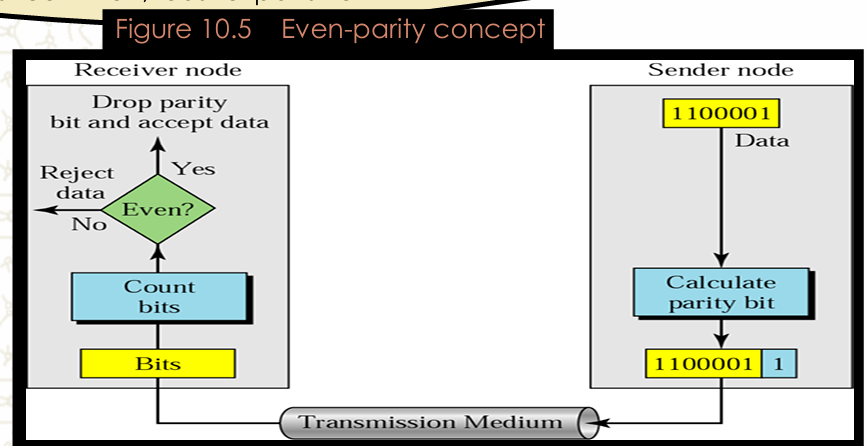
What are the limitations of simple parity check?
It detects all single-bit errors but only detects burst errors if the number of corrupted bits is odd.
How does 2-D parity check improve error detection?
It organizes data into rows and columns, calculates parity for each row and column, and appends parity bits. This increases the likelihood of detecting burst errors.
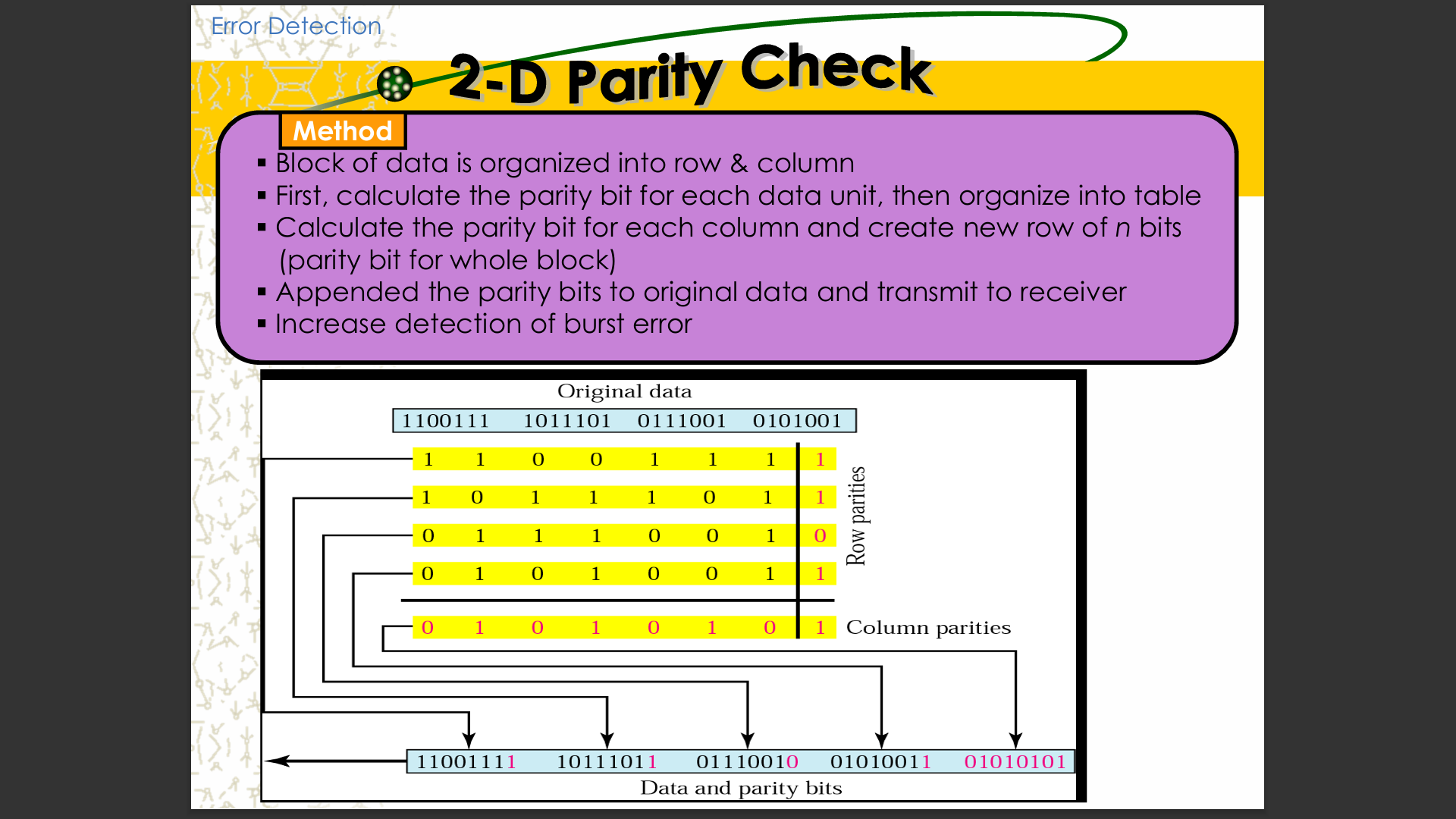
Describe the Cyclic Redundancy Check (CRC) method.
CRC appends a remainder (from binary division of data + appended zeros by a divisor) to the data. The receiver checks the remainder; if it’s zero, the data is intact.
(Refer to Figure 10.8 for binary division in CRC.)
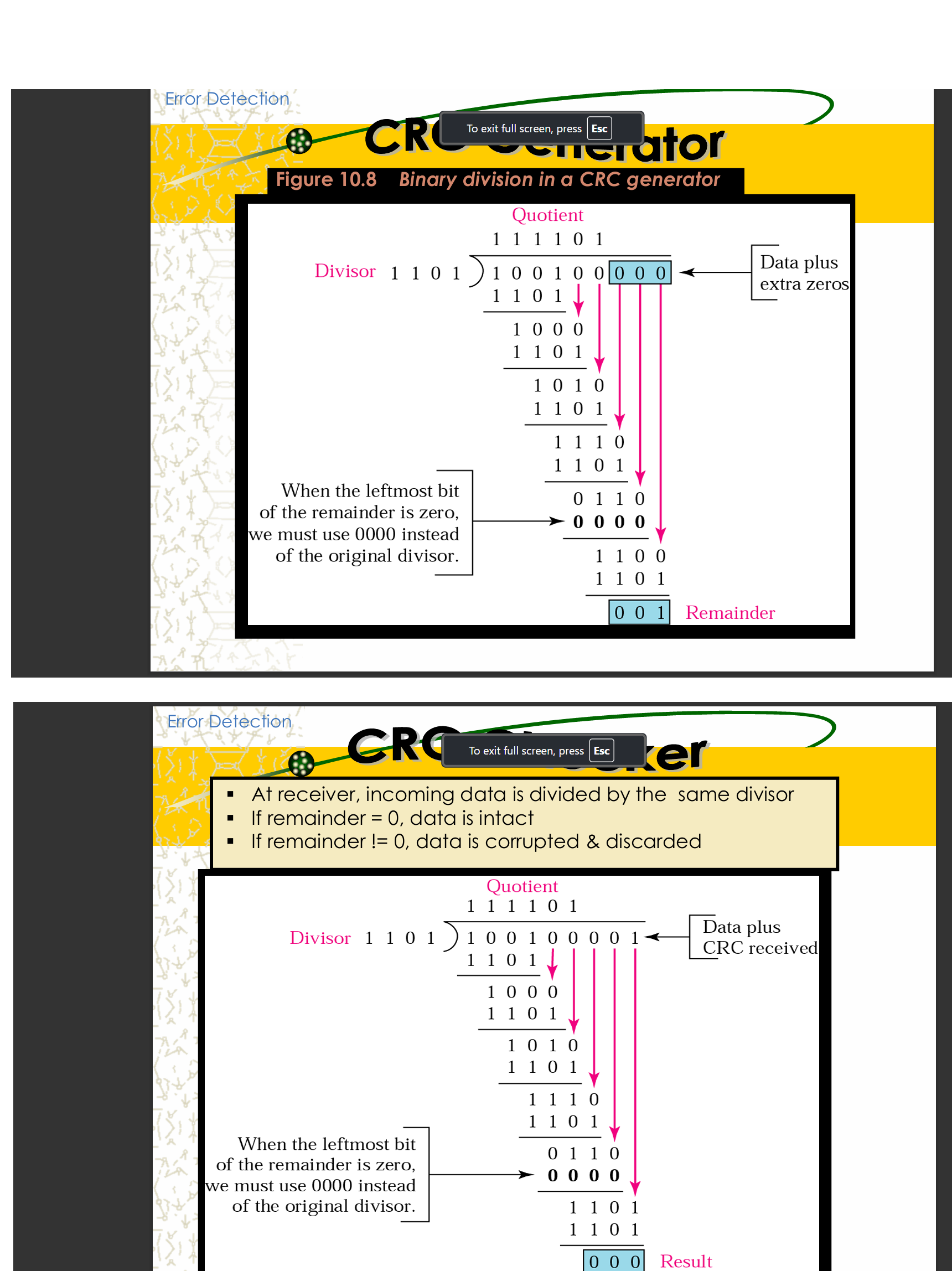
What properties should a CRC polynomial have?
It should not be divisible by x but should be divisible by x + 1. It should also detect burst errors up to the polynomial's degree.
(Refer to the polynomial example on Page 22.)
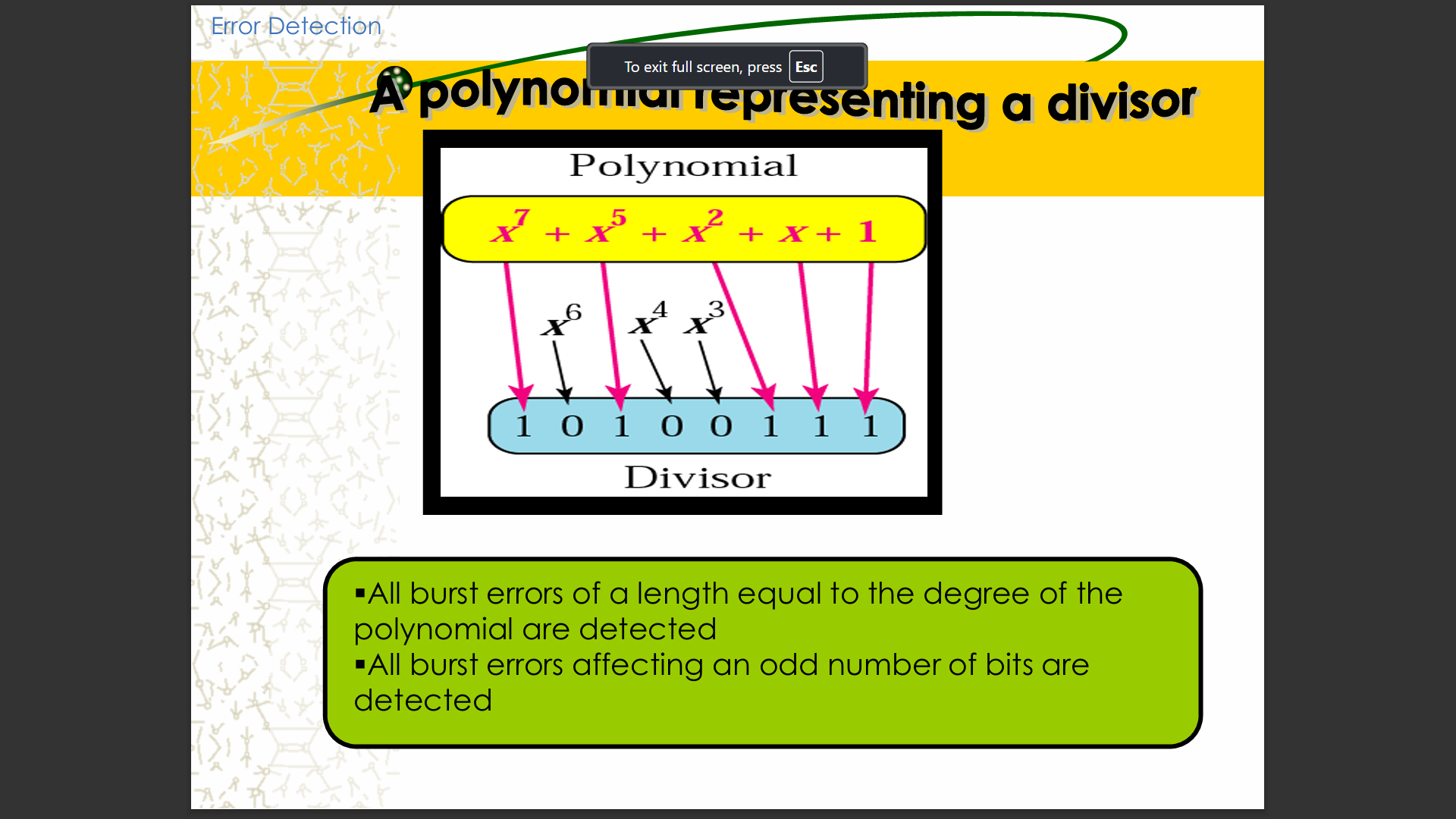
How does checksum error detection work?
The sender divides data into segments, adds them using 1s complement, complements the sum, and appends it as checksum. The receiver repeats the process; if the result is 0, the data is accepted.
*(Refer to Examples 7-9 for checksum calculations.)*
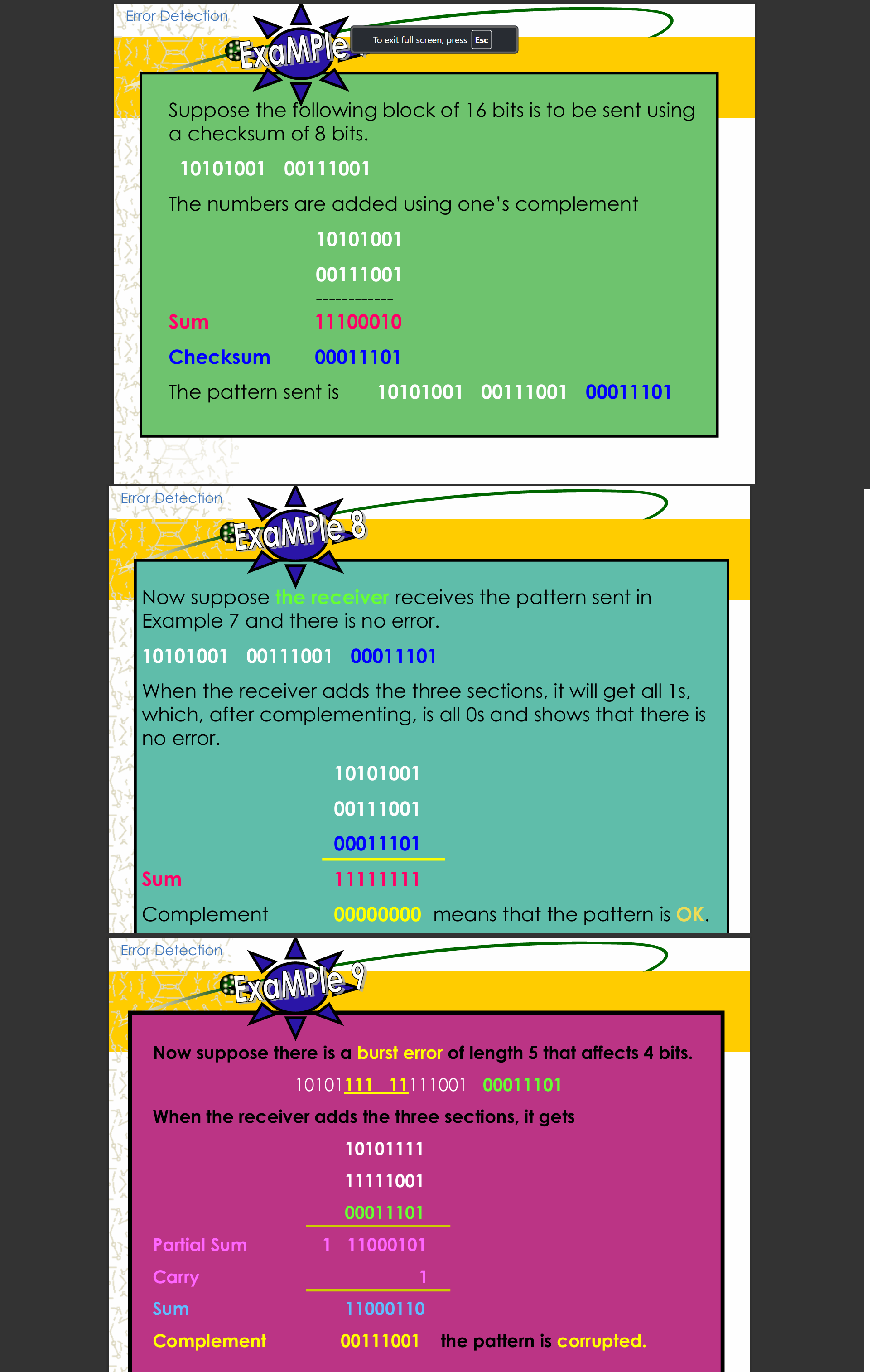
What happens in Example 1 if the word "world" is transmitted without errors?
The receiver counts the 1s in each character, finds even parity, and accepts the data.
What happens in Example 1 if the word "world" is corrupted during transmission?
The receiver detects odd parity in some characters, discards the data, and requests retransmission.
Name a standard polynomial used in CRC and its application.
CRC-32: x32+x26+x23+…+x+1x32+x26+x23+…+x+1, used in LANs.
What types of errors can CRC detect with high probability?
All burst errors affecting an odd number of bits, all bursts ≤ polynomial degree, and 99.97% of longer bursts.
How does Automatic Repeat Request (ARQ) work in error control?
ARQ automatically requests retransmission of damaged or lost frames detected by error-checking mechanisms like CRC or checksum.